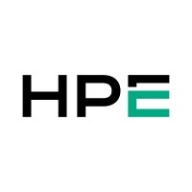

Sangfor HCI and HPE Alletra dHCI compete in the hyperconverged infrastructure category. Sangfor takes the lead in ease of management and affordability, while HPE Alletra excels in performance and intelligent features.
Features: Sangfor HCI differentiates itself with auto-scaling, user-friendly interfaces, and a simplified single license structure. It integrates various features, including endpoint security and backup capabilities. The robust GUI and native cloud features are also notable strengths. HPE Alletra dHCI stands out with intelligent replication and high availability. The integration with cloud services and advanced predictive analysis using the InfoSight AI platform enhance its resilience and scalability.
Room for Improvement: Sangfor HCI could improve in areas like SAS compatibility, Kubernetes support, and error reporting. Enhancements to virtualization tools and security integration are also needed. HPE Alletra dHCI requires broader hypervisor support and improved documentation. There are also calls for more comprehensive support and better upgrade processes.
Ease of Deployment and Customer Service: Sangfor HCI is praised for flexible deployment options including hybrid and private cloud setups. Its 24/7 support, though sometimes hindered by language barriers, is appreciated for its technical competence. HPE offers robust support but faces more stability issues, partly due to pandemic constraints.
Pricing and ROI: Sangfor HCI is generally considered cheaper, offering significant cost savings with its inclusive licensing. It presents better ROI through simplified, bundled features, maintaining a competitive edge despite rising prices. HPE Alletra dHCI comes at a higher cost but promises good ROI for mission-critical applications, with integration capabilities offsetting initial expenses over time.
| Product | Market Share (%) |
|---|---|
| HPE Alletra dHCI | 4.0% |
| Sangfor HCI - Hyper Converged Infrastructure | 3.9% |
| Other | 92.1% |

| Company Size | Count |
|---|---|
| Small Business | 24 |
| Midsize Enterprise | 2 |
| Large Enterprise | 3 |
| Company Size | Count |
|---|---|
| Small Business | 23 |
| Midsize Enterprise | 6 |
| Large Enterprise | 3 |
HPE Alletra dHCI, a data storage solution from Hewlett Packard Enterprise (HPE), offers Disaggregated Hyperconverged Infrastructure (dHCI), separating storage from compute resources for independent scaling and management. Utilizing HPE Nimble Storage technology, known for AI-driven optimization, it ensures high performance and management efficiency. With scalability and agility, users can effortlessly expand storage or processing power as data requirements evolve. Additionally, boasting rapid deployment in under 15 minutes and a claimed 99.9999% data availability, HPE Alletra dHCI promises robust and reliable storage solutions.
Sangfor HCI is an IT infrastructure platform built on converged architecture. It integrates server virtualization, distributed storage, and networking. Sangfor HCI provides a unified management platform that converges compute, storage, networking, and security on a single software stack. This approach delivers a simplified architecture, ease of use, and reliability for business-critical applications.
Hyperconverged infrastructure is a unified system of data storage. HCI combines storage, computing, networking, and management, unlike traditional storage solutions. HCI systems enable you to build your private cloud, expand to a public cloud, or have your own true hybrid cloud. Sangfor HCI presents two product models: The Sangfor HCI server appliance is a hardware version that enables easy deployment. Sangfor HCI software is the digital version combined with a third-party server that enables flexible deployment.
Sangfor HCI supports Windows systems on desktop and is web-based. Its range of use cases cover a wide spectrum of industries, from healthcare to manufacturing. It is applicable for mid- and large-sized businesses. The software is customizable. Users can customize the logo and contact information in the user interface.
Benefits and Features
Use Cases
Sangfor HCI can be applied tin various scenarios:
Reviews from Real Users
Gabriele P., Senior Software and Systems Engineer at SAMU.IT, says "It is flexible like a hyper-convergence system. You can add nodes, and you can scale to have better performance and stability. I also like the backup feature, the recovery system, and the web interface GUI to handle everything."
A Junior Solutions Engineer at a tech services company adds that "Sangfor has many solutions, and you can easily manage their machine servers with just one management. They're always striving for greatness, and they continuously update their products. For example, they have now built endpoint security within the firewall. They are continuously improving not only the security but also all other products."
We monitor all HCI reviews to prevent fraudulent reviews and keep review quality high. We do not post reviews by company employees or direct competitors. We validate each review for authenticity via cross-reference with LinkedIn, and personal follow-up with the reviewer when necessary.